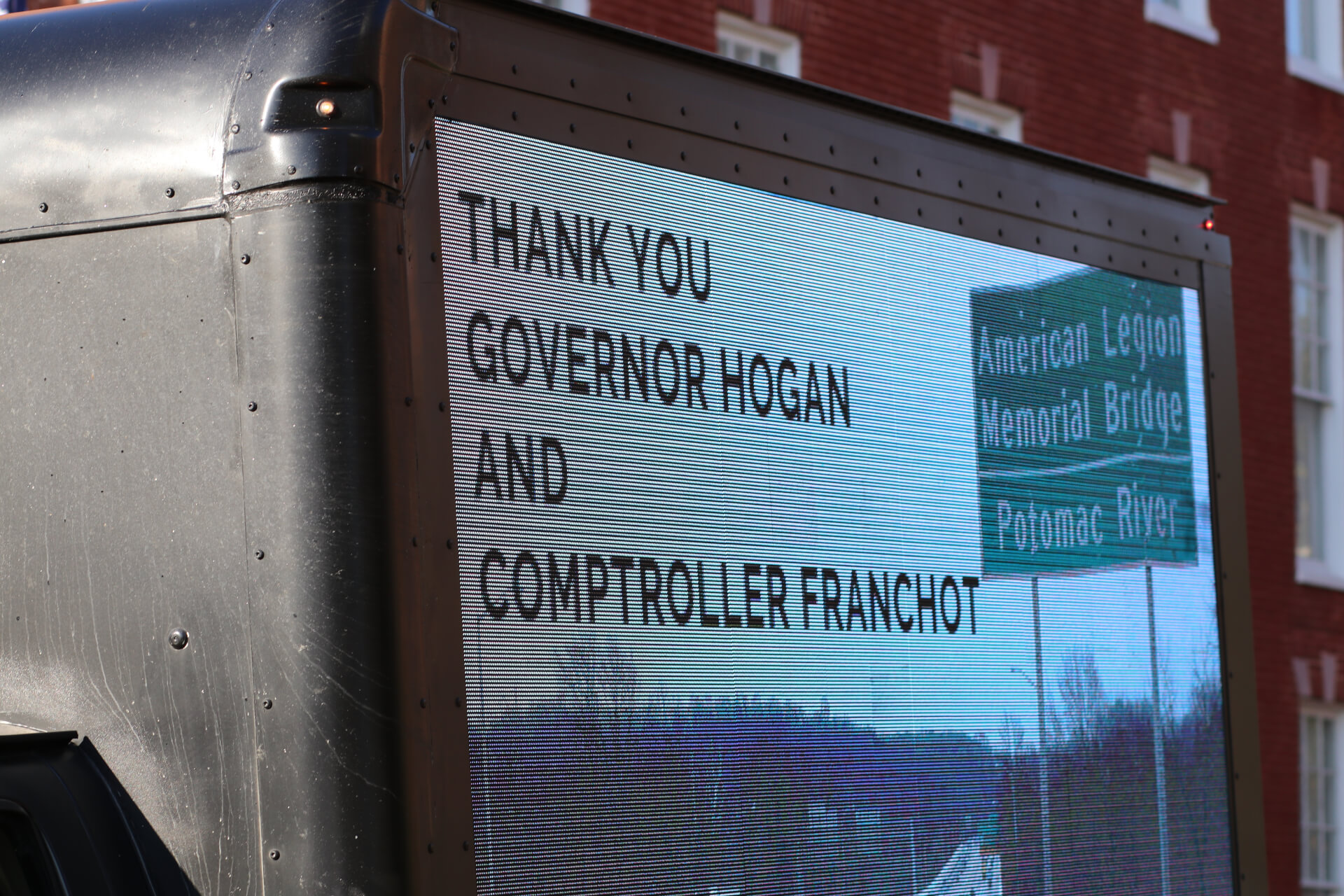Opinion: Public-Private Road Projects Will Boost a Flagging Economy

This year’s abrupt and necessary closing of the 2020 General Assembly session left many tasks unfinished for the residents of the great State of Maryland. Transportation and infrastructure funding, which took a back seat to more emotional and identifiable issues such as education funding, struggled to find its way during the session.
The quick exit of the legislature in mid-March after several days of frustrating inability to participate in the process was in some ways a relief because the state and country’s efforts were focused elsewhere. It was not a time to witness a one-sided debate on issues without the ability to effectively weigh in.
For the second year in a row the legislature was bombarded with bills that sought to kill the Interstate 495 and I-270 Public Private Partnership (P3) program. During the 2019-2020 sessions, 15 bills were introduced that could have delayed the P3 program or blocked it completely.
Some of the bills were nuisance-oriented, seeking to block right-of way acquisition or impose unnecessary new regulatory hurdles to eventually drive up costs and add delay. All were defeated.
Given our current dire economic circumstances, passage of any of these bills would have been short-sighted and tremendously inappropriate given the future economic picture the pandemic is creating for us. The economic impacts of this crisis are projected to be severe, with unemployment forecast to rise to 20-30%, necessitating an effective and timely response. It is clear that critical long-term investments in our public infrastructure must be part of any plan to restart the broken economy.
As early as 2022 the P3 program is slated to start with the rebuilding of the American Legion Bridge and the widening of the heavily congested I-270 corridor to reduce tremendous traffic bottlenecks. The new managed lanes would provide dramatic, lasting traffic relief for users of the toll lanes as well as the existing free lanes, which will remain free and be less congested than they are now.
The P3 program will have the added benefit of pumping $9 billion-$11 billion and 130,000 new jobs into the local economy over the next 10 years. For perspective, note that Maryland is estimated to receive $2.3 billion from the federal COVID-19 economic relief package enacted by Congress. Infrastructure investment will almost certainly boost our economy that now staggers from the impact of the coronavirus. Transportation and construction industries are no doubt “essential” in that such projects keep the economy flowing, hosting other sectors that can thrive such as retail, shipping, and delivery of all types of goods including groceries, medicine and medical supplies.
In addition, disadvantaged and minority-owned companies stand to gain a lot from this program. The one P3 bill that did pass requires all P3s to include minority contracting opportunities, which this project was already doing, but making this a requirement is good policy.
The infusion of such a major construction project into the local economy will keep residents working and provides a much needed shot in the arm for local governments that are clamoring for funds, hampered by unforeseen budget shortfalls fueled by the economy’s abrupt collapse. It is important to note that the I-495 and I-270 P3 program distinguishes itself by having the ability to move forward without public funding.
Much of the planning and design for the P3 project is already underway and it is of paramount importance that it stay on schedule in order to create the construction jobs needed to boost our economy. The idea that traffic (now artificially reduced) will diminish is a nonsense argument.
In addition to all the new jobs the P3 will provide, let’s also remember the importance of reducing congestion for the long-term health of our region. Sure, traffic is down now, but it won’t stay that way, and we need the road and transit improvements this project will bring. High-speed regional transit services, using the new managed lanes, has already been incorporated in the P3 program.
In addition, the new phasing is now aligned with local priorities that Montgomery and Frederick county officials have demanded for years, starting with replacing the American Legion Bridge and continuing all the way up I-270 to Frederick, and preliminary data show zero residential displacements on this part of the Beltway or I-270.
With these changes in the plan, local officials are getting what they’ve been asking for. They should now be lining up to support the P3 program and keep it on track.
The Suburban Maryland Transportation Alliance and everyone else who supports a balanced approach to traffic relief can now breathe a sigh of relief that our efforts were successful in defeating the myriad anti-P3 legislative measures that were proposed this year. Maryland needs the P3 program to move forward, now more than ever, to reduce severe congestion and build a stronger base for our region’s economic future.
Let’s do everything we can to move this critical investment forward without political divisiveness, not just to restore our world to where it was before, but to make it better.
— JENNIFER RUSSEL
The writer is vice chair of the Suburban Maryland Transportation Alliance.




 Creative Commons Attribution
Creative Commons Attribution